#2 REMARKABLE FILIPINO WRITERS IN THE DIFFERENT PERIOD
Explore tagged Tumblr posts
Text
POST-EDSA 1 REVOLUTION
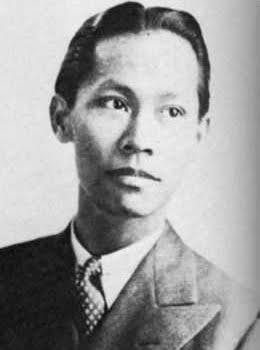
Carlos Sampayan Bulosan (c. 1911– September 11, 1956) was a Filipino American author, poet, and activist. A chronicler of the Filipino American experience during the 1930s - early 1950s, he is best remembered for his semi-fictional, semi-autobiographical novel America Is In the Heart (1946) — a staple in American Ethnic Studies and Asian American Studies classes.
Though Bulosan was only 42-45 years old when he died of tuberculosis-complicated pneumonia in Seattle in 1956, he left behind a large body of poems, novels, short stories, plays, and correspondence on a range of related topics. Bulosan’s works describe the experience of growing up poor in a rural area of the Philippines, chronicling social and economic conditions created by the American occupation and centuries of Spanish colonialism. Bulosan’s work captures the “push” factors that drove his generation to the United States. Like Bulosan, they hoped to find a better future and forged resilient and adaptive communities in the face of an often-hostile and exploitative European American culture in the United States. First migrating to the United States via Seattle in 1930, he spent several years working migratory labor jobs and labor organizing with his fellow Filipino immigrants. In doing so, Bulosan shared common experience with many other first-generation Filipino migrant workers, most of whom worked in domestic jobs or in agricultural or cannery labor on a migratory labor circuit that spanned the West Coast—from California to Oregon, Washington, and Alaska.
Reference: ::: University of Washington Libraries Digital Collections :::
https://content.lib.washington.edu › ...
::: Author, Poet, and Worker: The World of Carlos Bulosan :::
2 notes
·
View notes
Text
2 REMARKABLE WRITERS IN POST-EDSA REVOLUTION:
-Magno "Carlo" Jose Caparas (born December 15, 1958), widely known as Carlo J. Caparas, is a Filipino comic strip creator/writer-turned director and producer.
-Who is best known for creating such Filipino superheroes and comic book characters as Panday, Bakekang, Totoy Bato, Joaquin Bordado, Kamagong, Kamandag, Elias Paniki, Tasya Fantasya, Gagambino, Pieta and Ang Babaeng Hinugot Sa Aking Tadyang, among others.

-Gilda Olvidado (born 9 August 1957 in Cebu City, Cebu[1]) is a Filipina movie and television writer, and melodrama novelist. Her novels have been turned into live-action movies by VIVA Films, and also been remade for television through Sine Novela.
-The Filipino telenovelas Babangon Ako't Dudurugin Kita (2008), Dapat Ka Bang Mahalin (2009), Kung Mahawi Man ang Ulap (2007), and Sinasamba Kita (2007) were co-written by Olvidado. She co-wrote melodrama television programs including Kaputol ng Isang Awit (2008) and My Only Love (2007–2008).

Photo credit/reference: Wikipedia contributors. (2023b). Carlo J. Caparas. Wikipedia. https://en.wikipedia.org/wiki/Carlo_J._Caparas
Wikipedia contributors. (2022b). Gilda Olvidado. Wikipedia. https://en.wikipedia.org/wiki/Gilda_Olvidado
6 notes
·
View notes
Text
Period of Post Edsa 1 Revolution
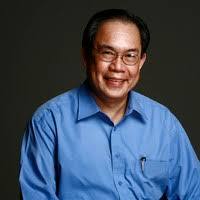
Photo Credit: https://up-diliman.academia.edu/JoseDalisay/CurriculumVitae
Jose Dalisay Jr., usually referred to as Butch Dalisay, is a professor, writer, and journalist from the Philippines. His short tales, essays, and novels are best recognized for frequently addressing identity, politics, and historical topics. "Killing Time in a Warm Place" and "Soledad's Sister" are a couple of his best-known works. Dalisay has won numerous accolades for his literature, including the Palanca Award, the Philippines' most esteemed literary honor. He is a member of the Order of National Artists for Literature in the Philippines.

Photo Credit:https://suripanitik.wordpress.com/2017/09/03/edgardo-m-reyes/
Filipino novelist, essayist, and short story writer Edgardo M. Reyes rose to fame for his works that highlighted the difficulties faced by common Filipinos. On July 7, 1937, he was born in Sta. Mesa was born in Manila and raised in Tondo and Santa Cruz, two working-class areas. Reyes was renowned for his graphic depictions of the social and economic problems, such as persecution, injustice, and poverty, that the underprivileged experience in Philippine society. His writings dealt with issues of identity, love, and atonement. "Maynila, sa mga Kuko ng Liwanag," a novel that depicts the harsh reality of life in Manila's slums and the difficulties of its urban poor, is one of his most well-known works. "Sa mga Kuko ng Liwanag" is another noteworthy piece.
3 notes
·
View notes
Text

MY REMARKABLE WRITERS
2 Remarkable Filipino Writers in the Different Periods in Philippine Literature
A vast and varied body of writings, Philippine literature reflects the history, culture, and customs of the nation. Over the years, a number of superior writers have come out of the Philippines, establishing works that have won over readers both domestically and abroad. Two of the most notable Filipino authors from various eras of Philippine literature will be highlighted in this introduction.
In the Period of Enlightenment (1872–1888), the Filipino spirit was reawakened after 300 years of apathy under Spanish control when three priests, Gomez, Burgos, and Zamora, were guillotined without adequate evidence of guilt.
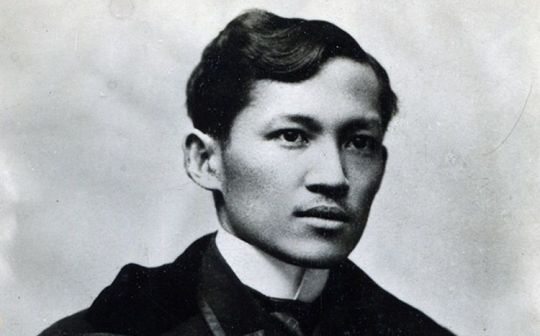
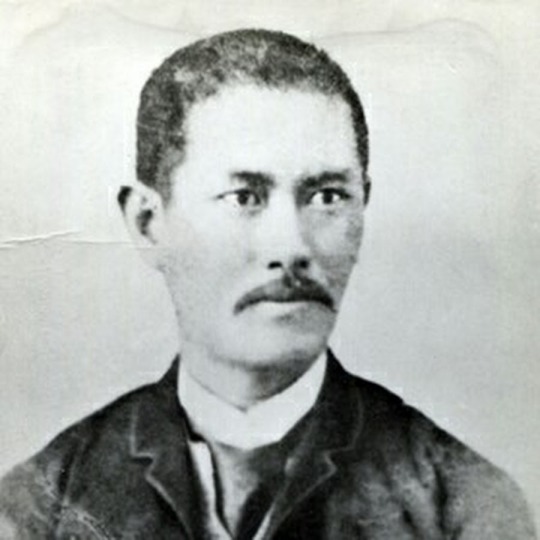
Dr. Jose Rizal was a nationalist, author, and revolutionary from the Philippines who inspired a movement for Philippine independence. His legacy has continued to motivate Filipinos to fight for social justice and independence.
Graciano Lopez Jaena was a key figure in the late 19th-century Philippine independence movement, rising to prominence in the Propaganda Movement. He was persecuted and exiled, but never wavered in his dedication to the nationalist cause.
Dr. Jose Rizal and Graciano Lopez Jaena were both influential figures in the Philippine nationalist movement during the late 19th century. Both Rizal and Lopez Jaena were important figures who played a key role in the development of Philippine nationalism and the struggle for independence from Spanish colonial rule. Their works and ideas continue to inspire and influence Filipinos today.
Consequently, the American Regime (1898–1944) was heavily influenced by American culture and values, resulting in a shift from traditional forms to modern and westernized styles. English became the dominant language of literature, replacing Spanish, and many writers adopted the themes, forms, and techniques of American writers.

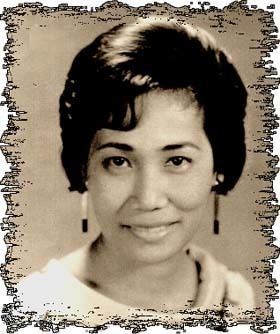
This period saw the emergence of notable writers such as Jose Garcia Villa and Paz Marquez-Benitez, who explored diverse themes such as identity, colonialism, and social justice. Despite its American influence, Philippine literature during this time also reflected the unique experiences and struggles of the Filipino people under colonial rule.
Jose Garcia Villa was a Filipino poet, author, and visual artist renowned for his avant-garde writing style and influence on generations of authors and poets.
Paz Marquez-Benitez was a Filipino author and educator born in 1894 who wrote "Dead Stars" and contributed plays, short stories, and essays to publications. She died in 1983.
Both Marquez-Benitez and Villa were important figures who helped establish Philippine literature in English as a vital part of the country's cultural heritage. Through their writing and criticism, they contributed to the growth and development of modern Filipino literature and helped pave the way for future generations of writers.

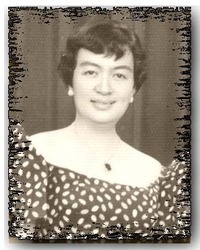
After the Americans, the Japanese Period from 1941 to 1945 entered. One of the two remarkable writers during this period was Juan Laya who is unable to adapt to the Japanese occupation and become a prolific writer in Filipino, contributing to Philippine literature and social realism.
And one of the most important authors in Philippine literature Liwayway Arceo is a well-known Filipino author who examines social and political concerns in her short tales and novels, such as "Lupang Tinubuan".
Both Laya and Arceo were important figures who helped shape Philippine literature during the Japanese period. Through their works, they captured the complexities of life under occupation, and helped preserve and promote the Filipino language and national identity during a time of great challenge and upheaval in the country's history.
In this period, it involves and introduces the poems Haiku, Tanka, Tanaga, and Karaniwang Uri, which are known in this new century.
Alternatively, Philippine literature in English from 1941 to 1945 was halted because of the strict Japanese prohibitions on the writing and publishing of works in English. Philippine literature in English experienced a dark period. But there were two unforgivable and remarkable writers during this dark period.

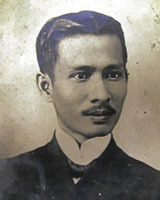
This period was connected to the American Regime, where there are three sub-periods: the Period of Re-Orientation (1898–1902), the Period of Imitation (1910–1923), and the Period of Self-Discovery (1925–1941), where there are two remarkable writers, Fernando M. Maramag and Carlos P. Romulo, who are the pioneering English poets during this period.
One of the founders of contemporary Filipino poetry Fernando M. Maramag was a founding figure of contemporary Filipino poetry, using English language and a formalist style to explore the struggles of a young woman in the country.
Another one, Carlos P. Romulo was a Filipino diplomat, journalist, author, and politician who achieved significant accomplishments for his nation, both domestically and internationally.
Overall, both Maramag and Romulo were important figures who made significant contributions to the development of Philippine literature in English during the period from 1941 to 1945. Through their works, they helped to establish and shape the literary culture of the country, and their legacy continues to inspire and influence Filipino writers today.
Following that, the Filipino youth are awake during the Period of Activism, known as the Bloody Placards Period from 1970 to 1972. Pociano Pineda claims that domestic and international issues contributed to the 1970–1972 youth activism. Activism and our country's history are intertwined. Pineda added that the youths had demonstrated at this point that our nationalism and race are not formed by perpetual denial. The amount of patience one has is limited. If overworked, it can erupt like a volcano.
However, the New Society Period from 1972 to 1980 approached, and it was interconnected to the Period of Activism, where the Green Revolution, family planning, a healthy diet, the environment, drug addiction, and pollution are just a few examples of subjects that were almost universally related to how the country was developing or progressing. The New Society made an effort to stop pornography and other publications that had a negative impact on people's morals. The school organizations and all newspapers were temporarily suspended.
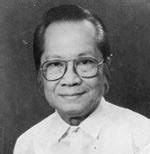

Because of that, the two remarkable writers facing this period are Ponciano Pineda was a poet who was known for his socially relevant poetry that tackled themes such as poverty, oppression, and the struggle for social justice. His works often highlighted the plight of the poor and marginalized members of society, making his poetry an important vehicle for social critique and commentary during this period.
Aniceto Silvestre, on the other hand, was a poet and literary and cultural critic who played a key role in shaping the development of Philippine literature during this period. He wrote a number of influential works on Philippine literature, including "Philippine Literary Criticism," which remains an essential resource for students and scholars of Philippine literature.
Overall, both Pineda and Silvestre made important contributions to Philippine literature during the New Society Period from 1972 to 1980. Through their works, they helped to shape the literary and cultural landscape of the country, and their influence continues to inspire and influence contemporary Filipino writers today.
Then came the Period of the Third Republic from 1981 to 1985, when the lifting of military rule in the Philippines led to a new nation known as the "New Republic" or "Third Republic," as our late President Ferdinand E. Marcos proclaimed during this period.
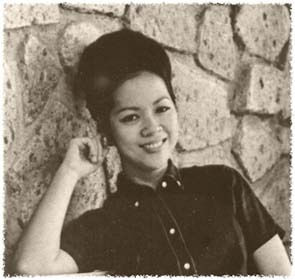

The two most remarkable writers during this period are Gilda Cordero-Fernando is a well-known writer, publisher, and cultural icon who has published extensively on topics such as women's issues, Philippine culture, folklore, and history.
Damiana L. Eugenio was a Filipino folklorist and literary expert who specialized in Philippine folklore, mythology, and stories. She received numerous honors for her contributions to Philippine culture and literature, including "Philippine Folk Literature".
Both Eugenio and Cordero-Fernando were instrumental in shaping the literary and cultural landscape of the Philippines during this period. Through their works, they helped to preserve and promote traditional Philippine culture and literature, while also addressing the contemporary concerns and issues of the time. Their contributions continue to inspire and influence contemporary Filipino writers today.
In the year when the Post-EDSA 1 Revolution (1986-1985) was published, journalism underwent a change from years of "guided newspapering" to free and ethical reporting. The "establishment" publications that supported Marcos shut down, while the alternative press rose to prominence.

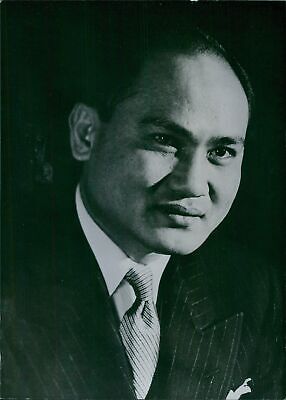
During this time, two remarkable writers were Bienvenido N. Santos was a Filipino-American writer, professor, and diplomat known for his works that addressed the lives of Filipino immigrants in America and the Philippines, such as "March of Death".
Lastly, Salvador P. Lopez was a writer, journalist, and educator who played a key role in shaping the development of Philippine literature and culture in the post-World War II era. He is best known for his influential essay, "Literature and Society," which argued for the importance of literature as a means of cultural expression and social criticism. Lopez also served as the first Philippine ambassador to the United Nations.
Overall, both Santos and Lopez made important contributions to Philippine literature during the period Post-EDSA 1 Revolution. Through their works, they helped to shape the literary and cultural landscape of the country, and their influence continues to inspire and influence contemporary Filipino writers today.
The literature of the Philippines has a long and varied history that reflects the culture, traditions, and struggles of the country.
Famous authors have contributed to the growth and evolution of Philippine literature from the Enlightenment to the Third Republic. Crafted by Jose Rizal, Graciano Lopez, Jose Garcia Villa, Paz Marquez-Benitez, Liwayway Arceo, Fernando M. Maramag, Carlos P. Romulo, Ponciano Pineda, Aniceto Silvestre, and Gilda Cordero-Fernando proceed to move and teach pursuers both locally and globally.
These authors have contributed to the development of a variety of literary forms, including poetry, short stories, essays, and plays, and they have investigated topics like identity, colonialism, social justice, and activism. Literature in the Philippines continues to be a vibrant and dynamic art form that adapts to the nation's challenges and shifting times.
9 notes
·
View notes
Text

2 remarkable writers in different period and their contribution.
Period of Activism:
Lualhati Bautista - is a Filipino writer and feminist who wrote about the struggles of women and marginalized sectors during the Martial Law era. Her most famous work, Dekada '70, is a novel about a middle-class family's experiences during the Martial Law period.
Jose "Pete" Lacaba - is a Filipino writer, journalist, and activist who wrote about the social and political realities of the Philippines during the Martial Law period. His most famous work, Days of Disquiet, Nights of Rage, is a collection of poems and essays that document the protests and political repression of the era.
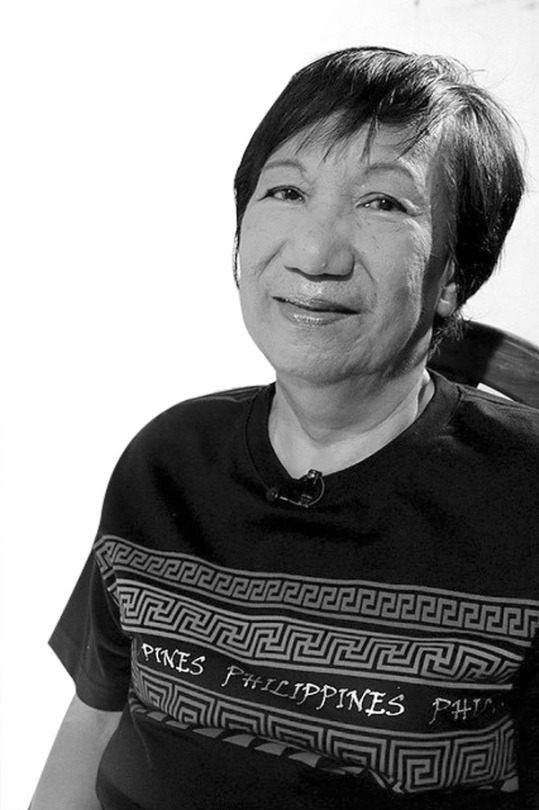
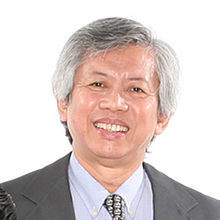
Period of New Society (1972-1986):
Jose Garcia Villa - He was a poet, short story writer, and literary critic who was known for his distinctive use of punctuation, which he called "comma poems". Villa's literary contributions during the period of the New Society include his collection of poems entitled "Selected Poems and New" and his book "Doveglion: Collected Poems".
Nick Joaquin - He was a prolific writer and journalist who wrote novels, plays, essays, and short stories. Joaquin's literary contributions during the period of the New Society include his novel "The Aquinos of Tarlac: An Essay on History as Three Generations", which explores the history of the Aquino family, and his collection of essays entitled "Culture and History".
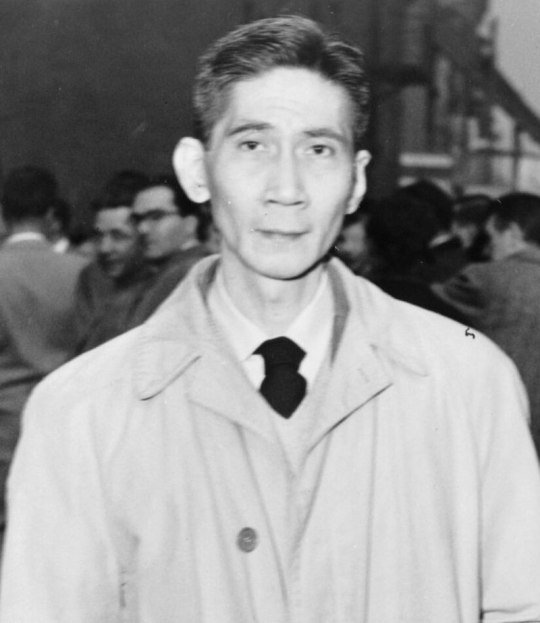

Period of Third Republic (1965-1972):
N.V.M. Gonzalez - He was a writer and critic who wrote novels, short stories, and essays. Gonzalez's literary contributions during the period of the Third Republic include his novel "The Bamboo Dancers" and his collection of essays entitled "The Novel of Justice: Selected Essays 1968-1994".
Francisco Arcellana - He was a poet, essayist, and short story writer. Arcellana's literary contributions during the period of the Third Republic include his collection of short stories entitled "The Mats" and his novel "Selected Poems".
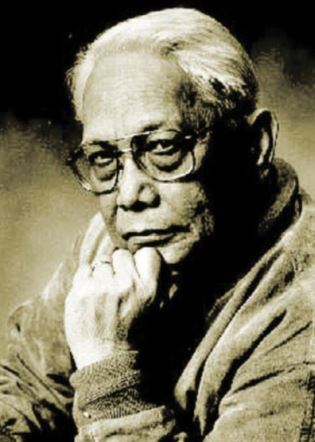
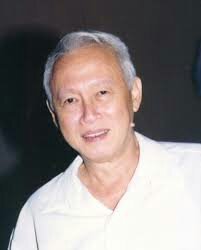
Post-EDSA 1 Revolution (1986-present):
F. Sionil Jose - He is a novelist and essayist who is best known for his series of novels collectively called "The Rosales Saga". Jose's literary contributions after the EDSA 1 Revolution include his novel "Po-on" and his collection of essays entitled "In Search of the Word: Selected Essays".
Jessica Hagedorn - She is a novelist, playwright, and poet who is known for her works that explore the experiences of Filipino immigrants in the United States. Hagedorn's literary contributions after the EDSA 1 Revolution include her novel "Dogeaters" and her play "The Gangster of Love".
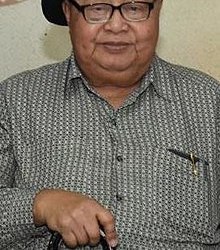
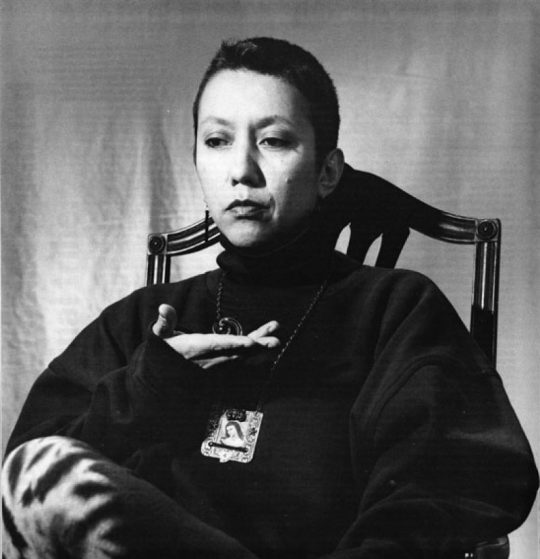
2 notes
·
View notes
Text
Remarkable Writers In Different Periods
Japanese Period
1. Julian Cruz Balmaceda

Julián Cruz Balmaceda, sometimes written Balmaseda, was a Filipino poet, essayist, playwright, novelist, journalist, and linguist who lived from January 28, 1885, to September 18, 1947. He produced a number of works in Spanish, English, and Filipino.
reference:
2. Jose Ma. Hernandez

Both a writer and a teacher, Jose Maria Hernandez. In America, he pursued acting and writing studies. His most well-known piece is the three-act historical drama Panday Pira.
the other plays Jose Ma wrote. Night Wind, Sunrise in the Farm, The Empty House, Prelude to Dapitan, and White Sunday are some of the plays by Hernandez that are based on the Bible.
The play White Sunday took home the literary Palanca Memorial Award.
reference: https://tl.m.wikipedia.org/wiki/Jose_Maria_Hernandez
Philippine Literature Period
1. Jose Carcia Villa

Jose Garca Villa was a Filipino poet, literary critic, short story writer, and painter who lived from August 5, 1908, to February 7, 1997. He was given the National Artist of the Philippines title for literature in 1973[2][3] and the Guggenheim Fellowship in creative writing by Conrad Aiken[4]. He is credited with introducing the "reversed consonance rhyme scheme" in poetry writing as well as the extensive use of punctuation, particularly commas, which earned him the moniker "Comma Poet"[5]. He wrote under the pen name Doveglion (derived from "Dove, Eagle, Lion") Another poet, E, also looked into these creatures. Villa is honored in the poem "Doveglion, Adventures in Value" by E. Cummings.[3]
reference: https://en.m.wikipedia.org/wiki/Jos%C3%A9_Garc%C3%ADa_Villa
2. Rodolfo Dato

Bicolano poet and educator Rodolfo Guevarra Dato. He produced tunes with an English sound. He became the dean of the University of Nueva Caceres and is Luis Dato's elder brother. He also published essays on Bikolnon culture. He compiled and edited Filipino Poetry, one of the most well-known anthologies of English poets, in 1924.
reference: https://bcl.m.wikipedia.org/wiki/Rodolfo_Dato
The New Society
1. Anciento Silvestre
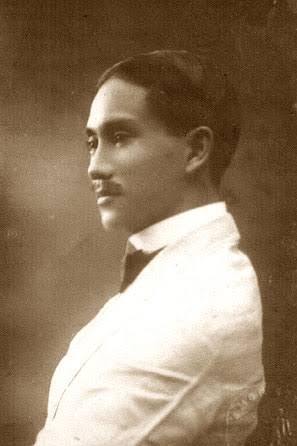
Despite not having received any formal training in writing, he was still able to produce beautiful poems, short stories, novels, and essays that contributed to the literature of the Philippines.
Eight categories in which his poems are categorized are found in the Nature collection: Free, Moving, Image of Life, Pulse of Love, Strong of Faith, Sign of Hope, Open to the Path of Greatness, and Blood in the Light of Sun.
Aniceto F. Silvestre won four First Prizes for his poetry before the war, a Third Prize for his work while under the Commonwealth government, a First Prize in the tenth year of the Republic of the Philippines, and a First Prize at the 1969 Palanca Memorial Awards for Literature.
reference: https://tl.m.wikipedia.org/wiki/Aniceto_Silvestre
2. Pelagio Cruz
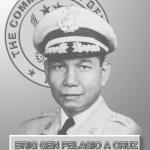
The first Chief-of-Staff from the Philippine Air Force to serve in the Armed Forces of the Philippines was Pelagio A. Cruz (June 16, 1912 – October 21, 1986).
reference: https://en.m.wikipedia.org/wiki/Pelagio_Cruz
The Period of Third Republic Philippines Literature (1965-1972)
1. N.V.M. Gonzalez
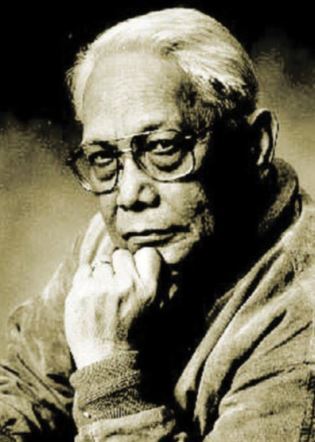
Gonzalez was a novelist and short story writer who is considered one of the pioneers of modern Philippine literature. His works often dealt with rural life and the struggles of the working class, and he was known for his vivid descriptions and lyrical prose. Gonzalez's contribution to Philippine literature was in his portrayal of the everyday lives of ordinary Filipinos, and his use of vernacular language and local settings in his writing.
reference: https://en.m.wikipedia.org/wiki/N._V._M._Gonzalez
2. F. Sionil Jose
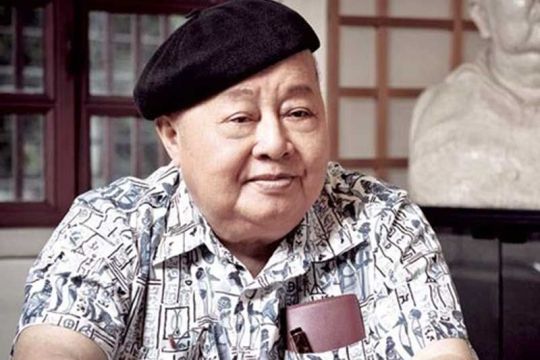
Jose was a novelist and journalist who is known for his epic historical novels that explore Philippine society and politics. His works often deal with issues of poverty, social injustice, and corruption, and he is considered one of the most important writers in Philippine literature. Jose's contribution to Philippine literature was in his critical examination of Philippine society and his efforts to expose the corruption and injustices that plague it.
reference: https://en.m.wikipedia.org/wiki/F._Sionil_Jos%C3%A9
Photo Credits:
1st Img:
https://www.google.com/search?client=ms-android-transsion&sxsrf=APwXEdeh3fEJ-aNLwLWVyG2H1Gu4KjrUOQ:1683042906425&q=julian+cruz+balmaceda&tbm=isch&sa=X&ved=2ahUKEwjV09C0_9b-AhVDEnAKHWLvAV8Q0pQJegQIDBAB&biw=360&bih=728&dpr=3#imgrc=rp-VeXX39fK64M&lnspr=W251bGwsbnVsbCxudWxsLG51bGwsbnVsbCxudWxsLG51bGwsbnVsbCxudWxsLG51bGwsbnVsbCxudWxsLG51bGwsbnVsbCxudWxsLG51bGxd
2nd Img:
https://www.google.com/imgres?imgurl=https%3A%2F%2Fupload.wikimedia.org%2Fwikipedia%2Fcommons%2F2%2F2d%2FJose_Maria_Hernandez_%2528cropped%2529.png&tbnid=lm88ETGpDRKXxM&vet=1&imgrefurl=https%3A%2F%2Fcommons.wikimedia.org%2Fwiki%2FFile%3AJose_Maria_Hernandez_(cropped).png&docid=m2shDy1ECOyezM&w=266&h=401&source=sh%2Fx%2Fim
3rd Img:
https://www.google.com/search?q=jose+garcia+villa&oq=&aqs=chrome.4.69i58j69i176j69i64j35i39i362i523l3j46i39i362i523l3j35i39i362i523l4j46i39i362i523l2.-1j0j4&client=ms-android-transsion&sourceid=chrome-mobile&ie=UTF-8#imgrc=CGPmkqI7nsXTDM&lnspr=W251bGwsbnVsbCxudWxsLG51bGwsbnVsbCxudWxsLG51bGwsbnVsbCxudWxsLG51bGwsbnVsbCxudWxsLG51bGwsbnVsbCxudWxsLG51bGxd
4th Img:
https://www.google.com/imgres?imgurl=https%3A%2F%2Fluisgdato.com%2Fwp-content%2Fuploads%2F2020%2F05%2Frodolfo-guevara-dato-3.jpg&tbnid=6co6Mp93mhvXlM&vet=1&imgrefurl=https%3A%2F%2Fluisgdato.com%2Frodolfo-dato-biography%2F&docid=BZolhF-r1zKphM&w=925&h=1325&hl=en-US&source=sh%2Fx%2Fim
5th Img:
https://www.google.com/imgres?imgurl=http%3A%2F%2F4.bp.blogspot.com%2F-xckfea8CKj4%2FVrCzk2-6H1I%2FAAAAAAAAALM%2FQzTFcn_ejt8%2Fs1600%2Fjcdejesus1.jpg&tbnid=S42XqT0Xi85r_M&vet=1&imgrefurl=http%3A%2F%2Fbsit1a-pilipinas-sining-panitikan.blogspot.com%2Fp%2Fblog-page.html&docid=MGnu2VpXdvHzFM&w=297&h=446&source=sh%2Fx%2Fim
6th Img:
https://www.google.com/search?client=ms-android-transsion&hl=en&sxsrf=APwXEdceZGInGd3oc8u6oiLdBIktPtTZGw:1683044736143&q=pelagio+sulit+cruz&tbm=isch&sa=X&ved=2ahUKEwi7642dhtf-AhVRx2EKHcgcB6AQ0pQJegQIDRAB&biw=360&bih=728&dpr=3#imgrc=rjS6raSke0zKcM&lnspr=W251bGwsbnVsbCxudWxsLG51bGwsbnVsbCxudWxsLG51bGwsbnVsbCxudWxsLG51bGwsbnVsbCxudWxsLG51bGwsbnVsbCxudWxsLG51bGxd
7th Img:
https://www.google.com/imgres?imgurl=https%3A%2F%2Fenglish.colostate.edu%2Fwp-content%2Fuploads%2Fsites%2F56%2F2017%2F10%2FNVM-Gonzales.jpg&tbnid=mgz3WQDMC0ln0M&vet=1&imgrefurl=https%3A%2F%2Fenglish.colostate.edu%2Fnews%2Ffilipino-american-history-month-n-v-m-gonzalez%2F&docid=UDb9tMnz-nafBM&w=315&h=442&hl=en-US&source=sh%2Fx%2Fim
8th Img:
9th Img:
3 notes
·
View notes
Text
PERIOD OF PHILIPPINE LITERATURE IN ENGLISH
TWO REMARKABLE WRITERS
1. Fernando Ma. Guerrero

Biography: Fernando María Guerrero Ramírez was a Spanish Filipino, poet, journalist, lawyer, politician, and polyglot who became a significant figure during the Philippines' golden period of Spanish literature, a period ranging from 1890 to the outbreak of World War II in 1940. He was born on May 30, 1873 and he died on June 12, 1929.
Contribution: He was a member of the First Philippine Assembly representing Manila's 2nd district, the Academia Filipina (Philippine Academy) and also became a leader of the Municipal Board of Manila. He was also a correspondent to the Royal Academy of the Spanish Language in Madrid. His poetry book Crisálidas was published in 1914.
2. Manuel H. Bernabe

Biography: A poet, linguist, and politician, Manuel Bernabe was born on February 17, 1890 to Timoteo Bernabe and Emilia Hernandez of Paranaque, Rizal.
He studied at the Ateneo de Manila where he finished his Bachelor of Arts degree with high academic standing. In 1910, Manuel's first paem was published in the Renacimiento Filipino. In 1912, he translated Virgil's Aenid from Latin to Spanish. In 1913, he received an award for his poems The Hymn to the Sacred Heart of Jesus, El Zapote, and España en Filipinas.
Contribution: He taught Spanish in different schools such as: Far Eastern University, Philippine Law School and Institute de Espanol at Colegio de San Juan de Letran. In 1951, he accompanied President Elpidio Quirino on the latter’s state visit to Spain. He joined the world of politics, as a representative to Congress of the first district of Rizal.
References:
Retrieved from http://geocitiessites.com/sinupan/BernabeM.htm
Retrieved from https://www.wikipedia.org/
1 note
·
View note
Text
2 remarkable filipino writers in the different periods

José Rizal, in full José Protasio Rizal Mercado y Alonso Realonda, (born June 19, 1861, Calamba, Philippines—died December 30, 1896, Manila), patriot, physician, and man of letters who was an inspiration to the Philippine nationalist movement.
José Rizal (1861-1896) is one of the most revered figures in Philippine history. He was a multifaceted intellectual and a political activist, best known for his political writings that inspired the Philippine revolution and ultimately led to his execution by the Spanish colonizers.

Nick Joaquin, byname of Nicomedes Joaquin, (born May 4, 1917, Paco, Manila, Philippines—died April 29, 2004, San Juan), Filipino novelist, poet, playwright, essayist, and biographer whose works present the diverse heritage of the Filipino people.
He was well known as a historian of the brief Golden Age of Spain in the Philippines, as a writer of short stories suffused with folk Roman Catholicism, as a playwright, and as a novelist. Joaquin wrote his works in English. The novel The Woman Who Had Two Navels (1961) examines his country's various heritages
0 notes
Text
2 REMARKABLE WRITERS IN DIFFERENT PERIOD
The Philippine Literature in English
Carlos P. Romulo

Carlos P. Romulo, or Carlos Pea Romulo, was a Philippine commander, diplomat, and journalist most known for his work on behalf of the Allies during World War II and his later work with the United Nations. He was born in Camiling, Philippines, on January 14, 1899, and passed away in Manila on December 15, 1985. Philippines, January 14, 1899 aged 86; passed away on December 15, 1985 in Manila, Philippines Prize For Literature: Pulitzer
Romulo was appointed editor in chief of TVT Publications in 1931. This organization published three newspapers, one each in English, Spanish, and Tagalog (the second most common language in the Philippines). He took over as publisher of a different chain of newspapers in 1937. Source: https://www.google.com/search?q=Carlos+P.+Romulo&tbm=isch&ved=2ahUKEwiHsKbrjNv-AhWMEYgKHST5D8MQ2-cCegQIABAA&oq=Carlos+P.+Romulo&gs_lcp=CgNpbWcQAzIFCAAQgAQyBQgAEIAEMgUIABCABDIFCAAQgAQyBQgAEIAEMgUIABCABDIECAAQHjIECAAQHjIECAAQHjIECAAQHjoECCMQJzoGCAAQBxAeOgYIABAIEB46BwgAEBgQgAQ6BwgjEOoCECdQ2gdY8RNgwBloAXAAeACAAXGIAc0BkgEDMS4xmAEAoAEBqgELZ3dzLXdpei1pbWewAQrAAQE&sclient=img&ei=TVlTZMfVKYyjoASk8r-YDA&bih=568&biw=1366&rlz=1C1CHBD_enPH1044PH1044
Jose Garcia Villa
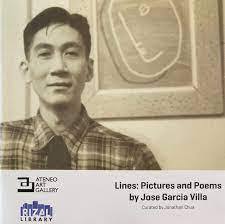
In 1908, José Garcia Villa was born in Manila. He studied at the University of the Philippines, but was expelled in 1929 after the Philippines Herald Magazine published a collection of sensual poems under the title "Man-Songs." He received a reward for winning a short story competition run by the Philippines Free Press that year, and he used it to fly to the United States to attend the University of New Mexico. Villa relocated to New York City's Greenwich Village from New Mexico. There, he became the only poet of Asian descent in a neighborhood that also included E. The modernist poets E. Cummings, W. H. Auden, and others. His Footnote to Youth: Tales of the Philippines and Others (Charles Scribner's Sons) was the first publication, published in 1933.
A significant American-based press has published a work of fiction by a Filipino author. Many Voices (Philippine Book Guild) and Poems (The Philippine Writers' League), two poetry collections by Villa, were published in the Philippines in 1939 and 1941, respectively. Have Come, Am Here (Viking Press), his first book of poetry published in the United States, was a finalist for the 1943 Pulitzer Prize. He continued to produce poetry volumes, including Poems in Praise of Love (A. S. Florentino, 1962) and Selected Poems and New (McDowell Obolensky, 1958) and Volume Two (New Directions, 1949), in the Philippines and the United States, respectively. Villa received a lot of accolades and prizes, including a Guggenheim Fellowship, a the Shelley Memorial Award, the American Academy of Arts and Letters Poetry Award, the Philippines Heritage Award, and the Rockefeller Foundation Fellowship. He was recognized as a National Artist of the Philippines in 1973, and he also advised the Philippine government on cultural matters. He passed away on February 7, 1997, in New York City.
Source: https://www.google.com/search?q=Jose+Garcia+Villa&tbm=isch&ved=2ahUKEwi9x5W_jdv-AhXYZ94KHbKxBIgQ2-cCegQIABAA&oq=Jose+Garcia+Villa&gs_lcp=CgNpbWcQAzILCAAQgAQQsQMQgwEyBQgAEIAEMgUIABCABDIFCAAQgAQyBQgAEIAEMgUIABCABDIFCAAQgAQyBQgAEIAEMgUIABCABDIFCAAQgAQ6BAgjECc6BggAEAcQHjoHCCMQ6gIQJ1DxDFjtD2CLE2gBcAB4AIABb4gB3AGSAQMwLjKYAQCgAQGqAQtnd3Mtd2l6LWltZ7ABCsABAQ&sclient=img&ei=_VlTZP3UItjP-Qay45LACA&bih=568&biw=1366&rlz=1C1CHBD_enPH1044PH1044
0 notes
Text
POST-EDSA 1 REVOLUTION
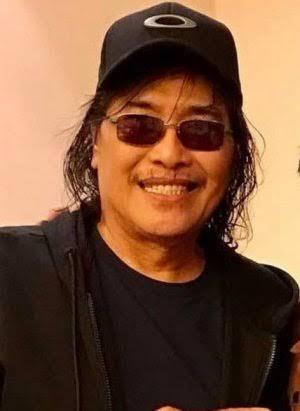
Carlo Magno Jose Caparas (born December 15, 1958) is a Filipino comic strip creator and writer-turned film director and producer. He is best known for creating such Filipino superheroes and comic book characters as Panday, Bakekang, Totoy Bato, Joaquin Bordado, Kamagong, Kamandag, Elias Paniki, Tasya Fantasya, Gagambino, Pieta and Ang Babaeng Hinugot Sa Aking Tadyang, among others. He is also known as a director of numerous massacre films such as Kuratong Baleleng and The Cory Quirino Kidnap: NBI Files. Caparas was awarded the 2008 Sagisag Balagtas Award.
Reference: DBpedia
https://dbpedia.org › page › Carlo_J...
About: Carlo J. Caparas
2 notes
·
View notes
Text
2 REMARKABLE WRITERS IN PERIOD OF THIRD REPUBLIC:
-Edgardo B. Maranan (1946 – May 8, 2019 was a Filipino poet, essayist, fiction writer, playwright, translator and writer of children's stories.
-He wrote in Filipino and in English. Maranan was inducted to the Carlos Palanca Memorial Awards for Literature Hall of Fame in 2000 after receiving five first place awards. Maranan has taken home the most awards—33 overall—for his works in both English and Filipino.

-Alfredo "Freddie" Navarro Salanga (1948–1988), a multi-awarded writer, literary critic, columnist, journalist, novelist, poet, and editor from the Philippines.
- The Manila Critics Circle included him as a member. The Birthing of Hannibal Valdez, a novella published in 1984, was written by him. He was referred to as "Daddy Giant."

Photo credit/reference: Wikipedia contributors. (2023a). Edgardo Maranan. Wikipedia. https://en.wikipedia.org/wiki/Edgardo_Maranan#:~:text=Edgardo%20B.,in%20Filipino%20and%20in%20English.
Wikipedia contributors. (2022). Alfredo Navarro Salanga. Wikipedia. https://en.m.wikipedia.org/wiki/Alfredo_Navarro_Salanga
2 notes
·
View notes
Text
Period of Third Republic

Photo Credit: https://www.goodreads.com/author/show/346573.Edilberto_K_Tiempo
Edilberto K. Tiempo, a novelist, poet, and literary critic who lived from 1913 to 1996, is renowned for his contributions to Philippine literature. Themes of love, loss, and the search for one's identity frequently appeared in his writings. One of the most esteemed literary workshops in the Philippines, the Silliman University National Writers Workshop, was co-founded by him. Throughout his career, Tiempo received numerous literary honors, including the 1999 National Artist for Literature award.

Photo Credit:https://tl.wikipedia.org/wiki/Alejandro_Roces,_Sr.
Alejandro Roces, a writer, essayist, and diplomat, was born in 1924 and died in 2011. He was well-known for his witty and hilarious writing, and many of his works took a satirical approach to social concerns. The essay "The Filipino Way of Life," which examines the distinctive features of Philippine culture and tradition, is Roces' most well-known composition. Additionally a prolific short story writer, he received the National Artist for Literature award in 2003. Both Joaquin and Roces are acknowledged as significant authors in Philippine literature, whose writings have had a long-lasting effect on the nation's cultural and literary landscape.
2 notes
·
View notes
Text
2 remarkable writers in different period and their contribution.
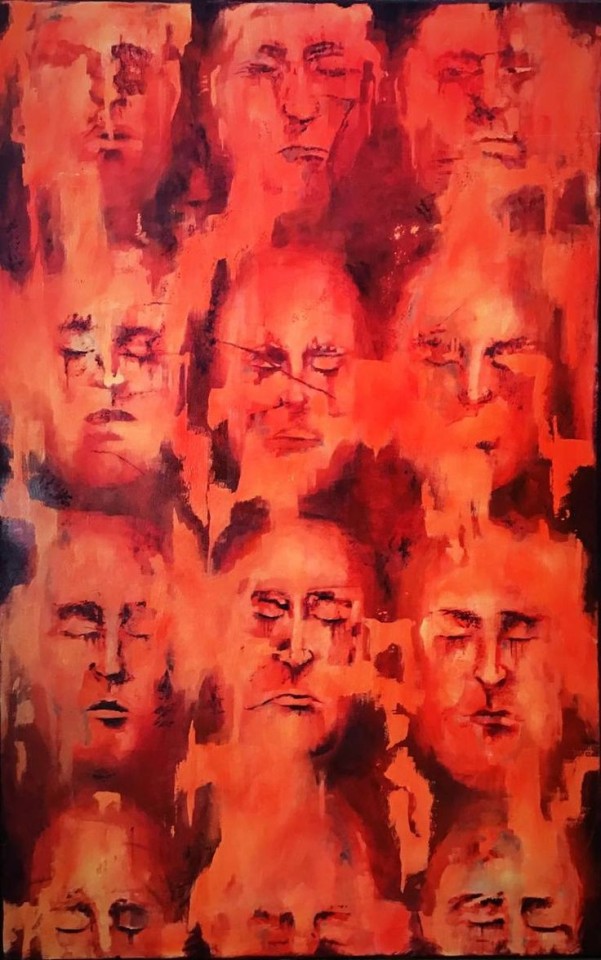
- period of Enlightenment
-period of American Regime
-Japanese period
-Philippines literature In english
Enlightenment:
José Rizal - was a Filipino polymath, nationalist and the most prominent advocate for reform in the Philippines during the Spanish colonial era. He is best known for his novels Noli Me Tangere and El Filibusterismo, which exposed the injustices and corruption of the Spanish colonial government.
Marcelo H. del Pilar - was a Filipino writer, journalist and lawyer who used his writing to expose the injustices and abuses of the Spanish colonial government. He founded the newspaper La Solidaridad, which became the voice of the Propaganda Movement, a group of Filipino intellectuals who sought reforms and advocated for Philippine independence.
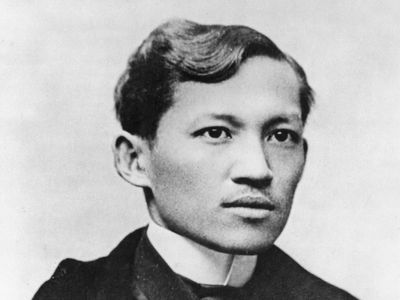
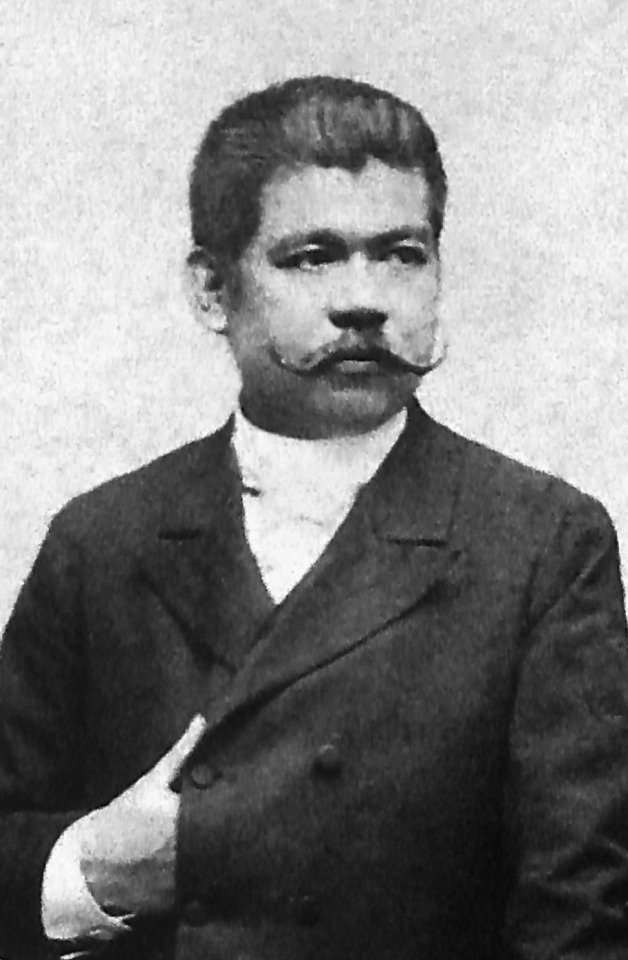
American Regime:
Nick Joaquin - was a Filipino writer, historian and journalist who wrote about Philippine history and culture during the American colonial period. He is best known for his works such as The Woman Who Had Two Navels and May Day Eve.
Paz Marquez Benitez - was a Filipino writer who is considered the first Filipino woman to publish a short story in English. Her short story, "Dead Stars", is considered a landmark in Philippine literature in English and is widely anthologized.
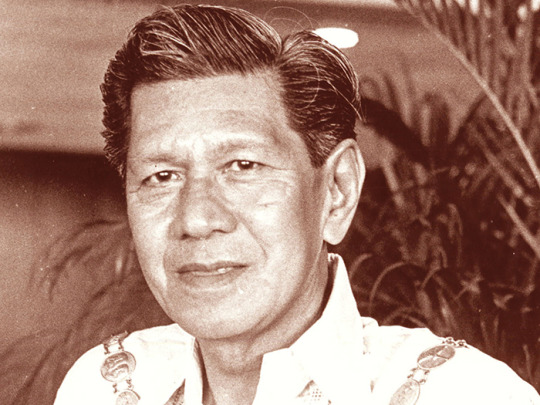
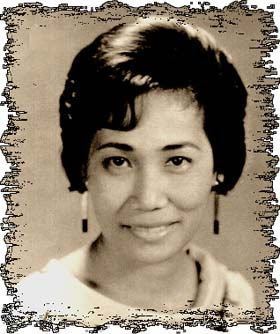
Japanese:
Carlos Bulosan - was a Filipino writer and labor activist who wrote about the struggles of Filipino migrant workers in the United States during the Japanese occupation of the Philippines. His most famous work, America Is in the Heart, is a semi-autobiographical novel about his experiences as a migrant worker in the United States.
Jose Garcia Villa - was a Filipino poet, writer, and painter who wrote during the Japanese occupation of the Philippines. His works are known for their formal experimentation and use of modernist techniques.
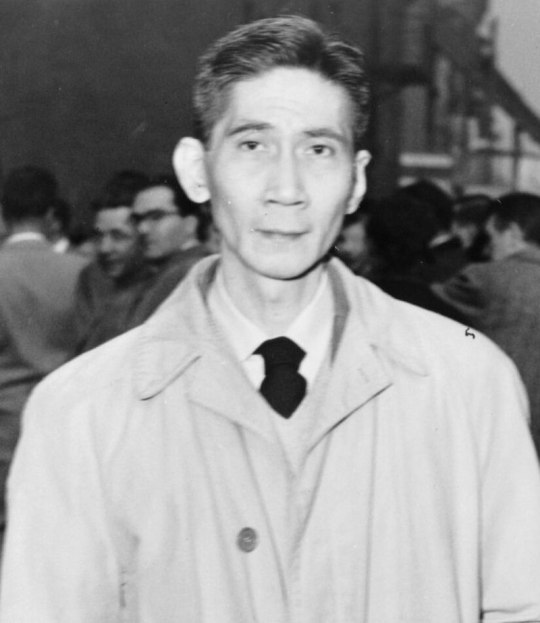
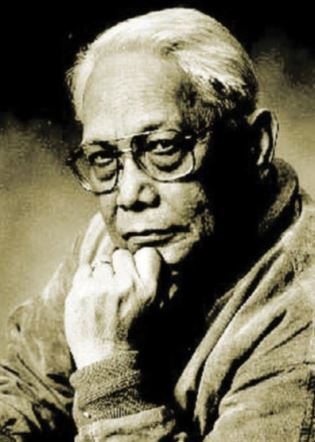
Philippine Literature in English:
N.V.M. Gonzalez - was a Filipino writer and one of the pioneers of Philippine literature in English. He is best known for his short stories and novels that depict the lives of ordinary Filipinos in rural and urban settings.
F. Sionil Jose - is a Filipino writer and journalist who is known for his novels that explore the themes of social injustice, poverty, and colonialism. His most famous work, the Rosales Saga, is a five-novel series that traces the history of the Philippines from Spanish colonialism to the present day.
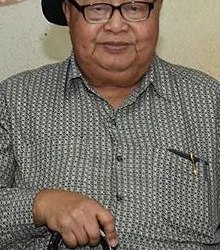

3 notes
·
View notes
Text
Remarkable Writers In The Different Periods
Period of Activism
1. Ponciano B. Peralta Pineda
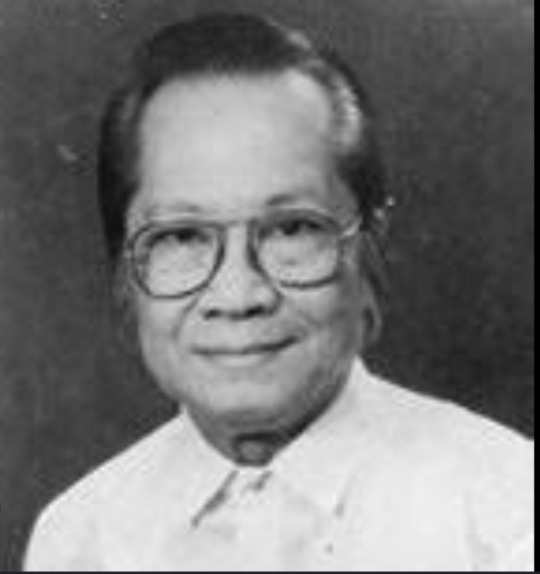
Filipino author, educator, linguist, and attorney Ponciano B. Peralta Pineda. Due to his support for the creation of a commission under Section 9 of the Philippine Constitution, Ponciano Pineda is regarded as the "Father of the Commission on Filipino Language"[1].
From 1971 to 1999, he served as the director of the Commission on the Filipino Language, formerly known as the Surian ng Wikang Pambansa (Filipino: Komisyon sa Wikang Filipino). Pineda began sociolinguistic studies to broaden the Filipino language under his direction.
reference:https://en.wikipedia.org/wiki/Ponciano_B._P._Pineda
2. Jose "Pete" Lacaba

Jose "Pete" Lacaba - A poet, journalist, and screenwriter, Lacaba's works often dealt with the themes of social injustice, oppression, and resistance. He is the author of "Days of Disquiet, Nights of Rage" and "Mga Kagila-gilalas na Pakikipagsapalaran sa mga Himala."
reference: https://en.m.wikipedia.org/wiki/Pete_Lacaba
Post Edsa Writer
1. Jose Dalisay Jr.
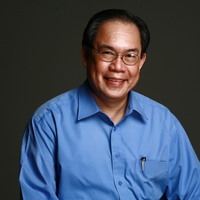
Jose Dalisay Jr. - Also known by his pen name, Butch Dalisay, he is a multi-awarded writer and essayist who has authored numerous books and articles, including "Killing Time in a Warm Place" and "Soledad's Sister."
reference: https://en.m.wikipedia.org/wiki/Jose_Dalisay_Jr.
2.Nick Joaquin
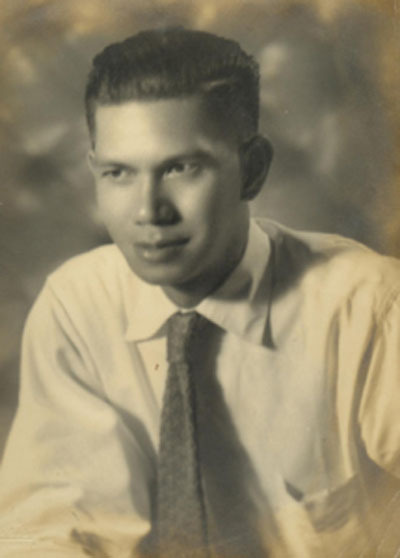
Nick Joaquin - A well-known writer and historian, Joaquin's works often explore the complexities of Philippine history and culture. Some of his notable works include "The Woman Who Had Two Navels" and "Cave and Shadows."
reference:https://en.m.wikipedia.org/wiki/Nick_Joaquin
Pre- Colonial Period
1. José Protasio Rizal Mercado y Alonso Realonda
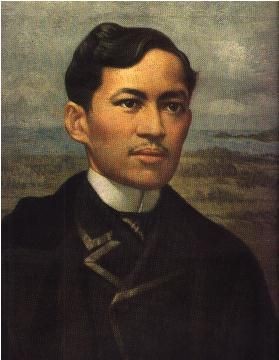
was a Filipino nationalist, writer, and polymath active at the conclusion of the Spanish colonial period of the Philippines (Spanish: [xose rizal, -al], Tagalog: [hose isal]; June 19, 1861 - December 30, 1896). He is regarded as the national hero (pambansang bayani) of the Philippines.[8][9] A writer and prominent figure in the Filipino Propaganda Movement, which promoted political reforms for the colony under Spanish rule, Rizal was an ophthalmologist by trade.
reference: https://en.m.wikipedia.org/wiki/Jos%C3%A9_Rizal
2. Marcelo H. Del Pilar

Marcelo Hilario del Pilar y Gatmaitán[2] (Spanish: [mae.lo i.la.jo el pila]; Tagalog: [mase.lo la.jo del pla]; August 30, 1850 – July 4, 1896), also known as Marcelo H. del Pilar, a Filipino author, lawyer, journalist, and freemason also known by his pen name Pláridel,[3][4] was also a writer. Del Pilar, along with Graciano López Jaena and José Rizal, rose to prominence as the head of the Reform Movement in Spain. [5]
reference: https://en.m.wikipedia.org/wiki/Marcelo_H._del_Pilar
Period Of Enlightenment
1. Antonio Luna
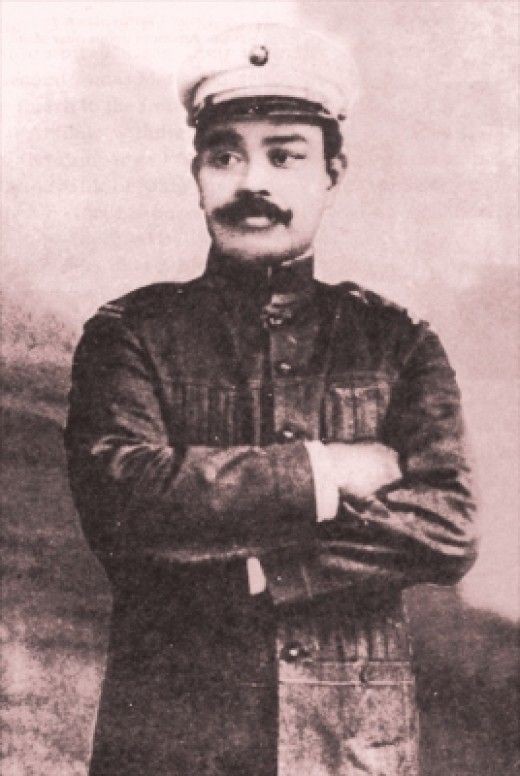
Before being assassinated on June 5, 1899, at the age of 32, Antonio Narciso Luna de San Pedro y Novicio Ancheta (Spanish: [antonjo luna]; October 29, 1866 - June 5, 1899) was a Filipino army commander who participated in the Philippine-American War.
reference: https://en.m.wikipedia.org/wiki/Antonio_Luna
2. Mariano Ponce y Collantes

Mariano Ponce y Collantes was a Filipino physician, author, and prominent propagandist who lived from March 22, 1863, until May 23, 1918. He helped form La Solidaridad and Asociación Hispano-Filipina in Spain. Efemerides Filipinas, a column on Philippine historical events that published in La Oceania Espaola (1892-1893) and El Ideal (1911–1912), was one of his notable works. In 1917, he published Ang Wika at Lahi, a discourse on the value of a national tongue. From 1909 to 1912, he also represented Bulacan in the Philippine Assembly.
reference:https://en.m.wikipedia.org/wiki/Mariano_Ponce
American Regime
1. Carlos P. Romulo

John Carlos Pea Romulo Jr. Filipino politician, statesman, soldier, writer, and author QSC GCS CLH NA GCrM GCrGH KGCR (January 14, 1898 – December 15, 1985). At the ages of 16, 20, and 32, he was a newspaper editor, a reporter, and a publisher. He co-founded the Boy Scouts of the Philippines, served as a general in both the US and Philippine armies, served as president of a university, and presided over the UN General Assembly.
reference:https://en.m.wikipedia.org/wiki/Carlos_P._Romulo
2. Paz Marquez Benitez
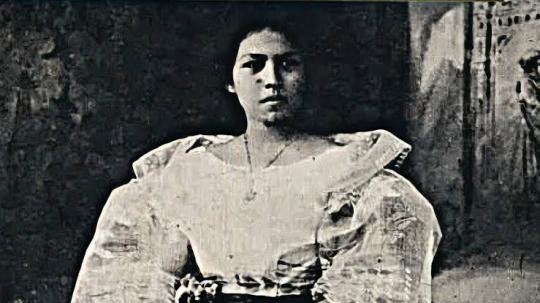
Paz Márquez-Bentez was a Filipino short story writer, educator, and editor (March 3, 1894 – November 10, 1983). Her career as a woman educator and writing contributions are seen as important steps within the advancement of women in professional careers as well as in the development of Philippine literature.
reference: https://en.m.wikipedia.org/wiki/Paz_M%C3%A1rquez-Ben%C3%ADtez
Photo Credits:
1st Img:https://www.google.com/imgres?imgurl=https%3A%2F%2Ftse1.mm.bing.net%2Fth%3Fq%3DPonciano%2BPineda&tbnid=WZC1z6oKPrB55M&vet=1&imgrefurl=https%3A%2F%2Fphschooli.github.io%2Fponciano-pineda.html&docid=63bXGiguB_cStM&w=150&h=154&itg=1&hl=en-US&source=sh%2Fx%2Fim
2nd Img: https://images.app.goo.gl/hTeHAivnMqeT748R7
3rd Img: https://www.google.com/imgres?imgurl=https%3A%2F%2F0.academia-photos.com%2F25515653%2F6973447%2F7863375%2Fs200_jose.dalisay.jpg&tbnid=NBSPTbqqnb2dTM&vet=1&imgrefurl=https%3A%2F%2Fup-diliman.academia.edu%2FJoseDalisay%2FCurriculumVitae&docid=nlqpiPJ0mbNdFM&w=200&h=200&hl=en-US&source=sh%2Fx%2Fim
4th Img: https://www.google.com/imgres?imgurl=https%3A%2F%2Fimages.gr-assets.com%2Fauthors%2F1271904633p8%2F74757.jpg&tbnid=nbm2NL2FMdmm0M&vet=1&imgrefurl=https%3A%2F%2Fwww.goodreads.com%2Fauthor%2Fshow%2F74757.Nick_Joaqu_n&docid=4DO2yFYXFPsVFM&w=400&h=558&hl=en-US&source=sh%2Fx%2Fim
5th Img:
https://pin.it/51o5z7r
6th Img:
https://pin.it/4iGGdMy
7th Img:
https://www.google.com/search?gs_ssp=eJzj4tTP1TdIzzA2NjVg9OLNTSzKTMzLVyjIz0tOBQBjjwgd&q=mariano+ponce&oq=Ma&aqs=chrome.3.69i60l3j46i39i650j69i60j69i57j69i59j69i60j46i67i650j0i67i433i650.1648j0j4&client=ms-android-transsion&sourceid=chrome-mobile&ie=UTF-8#imgrc=6iTmTDQzbONVuM&lnspr=W251bGwsbnVsbCxudWxsLG51bGwsbnVsbCxudWxsLG51bGwsbnVsbCxudWxsLG51bGwsbnVsbCxudWxsLG51bGwsbnVsbCxudWxsLG51bGxd
8th Img:
https://pin.it/1lXfM0v
9th Img:
https://www.google.com/imgres?imgurl=https%3A%2F%2Fcdn.tatlerasia.com%2Ftatlerasia%2Fi%2F2023%2F03%2F03132943-paz-f_cover_1600x900.jpg&tbnid=EcJM6sXtpjA_9M&vet=1&imgrefurl=https%3A%2F%2Fwww.tatlerasia.com%2Flifestyle%2Farts%2Fpaz-marquez-benitez&docid=dYhHL_yuRQCKCM&w=1600&h=900&source=sh%2Fx%2Fim
10th Img:
https://www.google.com/search?client=ms-android-transsion&sxsrf=APwXEdeh3fEJ-aNLwLWVyG2H1Gu4KjrUOQ:1683042906425&q=julian+cruz+balmaceda&tbm=isch&sa=X&ved=2ahUKEwjV09C0_9b-AhVDEnAKHWLvAV8Q0pQJegQIDBAB&biw=360&bih=728&dpr=3#imgrc=rp-VeXX39fK64M&lnspr=W251bGwsbnVsbCxudWxsLG51bGwsbnVsbCxudWxsLG51bGwsbnVsbCxudWxsLG51bGwsbnVsbCxudWxsLG51bGwsbnVsbCxudWxsLG51bGxd
5 notes
·
View notes
Text
2 REMARKABLE WRITERS IN DIFFERENT PERIOD
The Post Edsa Revolution
Nicomedes Márquez Joaquin

Source Image:
Filipino author and journalist Nicomedes "Nick" Marquez Joaquin (Tagalog: [hwakin]; May 4, 1917 - April 29, 2004) is most known for his English-language short stories and novels. Additionally, he wrote under the pseudonym Quijano de Manila. The status and designation of National Artist of the Philippines for Literature was given to Joaquin. Together with José Rizal and Claro M. Recto, he has been regarded as one of the most significant writers in Filipino history. Despite being a native Spanish speaker, Joaquin's most significant works were written in English as opposed to those of Rizal and Recto, whose writings were done in Spanish. He was a seminarian in Hong Kong before becoming one of the foremost practitioners of Filipino literature in English, but he eventually concluded that he could better serve God in another way.
Source: https://www.google.com/url?sa=t&source=web&rct=j&url=https://dbpedia.org/page/Nick_Joaquin&ved=2ahUKEwjMrsq9rdn-AhWYFogKHVB4BrEQFnoECB0QAQ&usg=AOvVaw0x5e1CW3APY-nqwR5wjcQK
Gilda Olvidado

Source Image:
youtube
Gilda Olvidado is a Filipina author of melodramas who has had her books adapted into live-action films by VIVA Films and for television by Sine Novela. Gilda Olvidado was born in Cebu City on August 9, 1957.
She was born and raised in Maranding, Lanao del Norte, Northern Mindanao, and attended Maranding Elementary School. Olvidado is the wife of Ruben Marcelino, a former editor-in-chief of the Atlas Publishing Company, with whom she has two children.
Carlo J. Caparas had impacted Olvidado, especially in the area of writing for Philippine comics.
Source: Gilda Olvidado, https://en.m.wikipedia.org
1 note
·
View note
Text
2 Remarkable Filipino Writer's in different period
The American Regime
1.Gen. Emilio Aguinaldo
Was selected the first president of the philippine republic but this was short lived.
2.Gen. Miguel Malvar in 1903.
The peace movements started as early as 1900. Many filipino started writing again and the nationalism of the people remain undaunted.
Japanese Period
1.José García Villa
August 5, 1908 – February 7, 1997) was a Filipino poet, literary critic, short story writer, and painter.
2.Néstor Vicente Madali González (NVM Gonzalez )
September 1915 – 28 November 1999) was a Filipino novelist, short story writer, essayist and, poet. Conferred as the National Artist of the Philippines for Literature in 1997.
0 notes